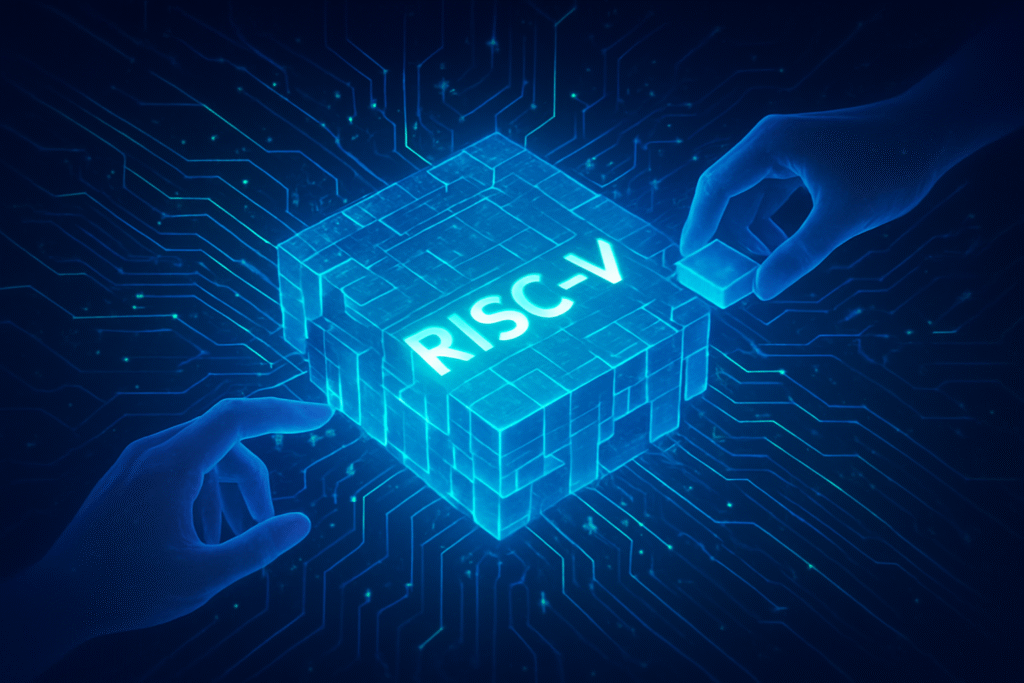
The semiconductor industry, long characterized by proprietary designs and colossal development costs, is undergoing a profound transformation. At the forefront of this revolution are open-source hardware initiatives, spearheaded by the RISC-V Instruction Set Architecture (ISA). These movements are not merely offering alternatives to established giants but are actively democratizing chip development, fostering vibrant new ecosystems, and accelerating innovation at an unprecedented pace.
RISC-V, a free and open standard ISA, stands as a beacon of this new era. Unlike entrenched architectures like x86 and ARM, RISC-V's specifications are royalty-free and openly available, eliminating significant licensing costs and technical barriers. This paradigm shift empowers a diverse array of stakeholders, from fledgling startups and academic institutions to individual innovators, to design and customize silicon without the prohibitive financial burdens traditionally associated with the field. Coupled with broader open-source hardware principles—which make physical design information publicly available for study, modification, and distribution—this movement is ushering in an era of unprecedented accessibility and collaborative innovation in the very foundation of modern technology.
Technical Foundations of a New Era
The technical underpinnings of RISC-V are central to its disruptive potential. As a Reduced Instruction Set Computer (RISC) architecture, it boasts a simplified instruction set designed for efficiency and extensibility. Its modular design is a critical differentiator, allowing developers to select a base ISA and add optional extensions, or even create custom instructions and accelerators. This flexibility enables the creation of highly specialized processors precisely tailored for diverse applications, from low-power embedded systems and IoT devices to high-performance computing (HPC) and artificial intelligence (AI) accelerators. This contrasts sharply with the more rigid, complex, and proprietary nature of architectures like x86, which are optimized for general-purpose computing but offer limited customization, and ARM, which, while more modular than x86, still requires licensing fees and has more constraints on modifications.
Initial reactions from the AI research community and industry experts have been overwhelmingly positive, highlighting RISC-V's potential to unlock new frontiers in specialized AI hardware. Researchers are particularly excited about the ability to integrate custom AI accelerators directly into the core architecture, allowing for unprecedented optimization of machine learning workloads. This capability is expected to drive significant advancements in edge AI, where power efficiency and application-specific performance are paramount. Furthermore, the open nature of RISC-V facilitates academic research and experimentation, providing a fertile ground for developing novel processor designs and testing cutting-edge architectural concepts without proprietary restrictions. The RISC-V International organization (a non-profit entity) continues to shepherd the standard, ensuring its evolution is community-driven and aligned with global technological needs, fostering a truly collaborative development environment for both hardware and software.
Reshaping the Competitive Landscape
The rise of open-source hardware, particularly RISC-V, is dramatically reshaping the competitive landscape for AI companies, tech giants, and startups alike. Companies like Google (NASDAQ: GOOGL), Qualcomm (NASDAQ: QCOM), and Intel (NASDAQ: INTC) are already investing heavily in RISC-V, recognizing its strategic importance. Google, for instance, has publicly expressed interest in RISC-V for its data centers and Android ecosystem, potentially reducing its reliance on ARM and x86 architectures. Qualcomm has joined the RISC-V International board, signaling its intent to leverage the architecture for future products, especially in mobile and IoT. Intel, traditionally an x86 powerhouse, has also embraced RISC-V, offering foundry services and intellectual property (IP) blocks to support its development, effectively positioning itself as a key enabler for RISC-V innovation.
Startups and smaller companies stand to benefit immensely, as the royalty-free nature of RISC-V drastically lowers the barrier to entry for custom silicon development. This enables them to compete with established players by designing highly specialized chips for niche markets without the burden of expensive licensing fees. This potential disruption could lead to a proliferation of innovative, application-specific hardware, challenging the dominance of general-purpose processors. For major AI labs, the ability to design custom AI accelerators on a RISC-V base offers a strategic advantage, allowing them to optimize hardware directly for their proprietary AI models, potentially leading to significant performance and efficiency gains over competitors reliant on off-the-shelf solutions. This shift could lead to a more fragmented but highly innovative market, where specialized hardware solutions gain traction against traditional, one-size-fits-all approaches.
A Broader Impact on the AI Landscape
The advent of open-source hardware and RISC-V fits perfectly into the broader AI landscape, which increasingly demands specialized, efficient, and customizable computing. As AI models grow in complexity and move from cloud data centers to edge devices, the need for tailored silicon becomes paramount. RISC-V's flexibility allows for the creation of purpose-built AI accelerators that can deliver superior performance-per-watt, crucial for battery-powered devices and energy-efficient data centers. This trend is a natural evolution from previous AI milestones, where software advancements often outpaced hardware capabilities. Now, hardware innovation, driven by open standards, is catching up, creating a symbiotic relationship that will accelerate AI development.
The impacts extend beyond performance. Open-source hardware fosters technological sovereignty, allowing countries and organizations to develop their own secure and customized silicon without relying on foreign proprietary technologies. This is particularly relevant in an era of geopolitical tensions and supply chain vulnerabilities. Potential concerns, however, include fragmentation of the ecosystem if too many incompatible custom extensions emerge, and the challenge of ensuring robust security in an open-source environment. Nevertheless, the collaborative nature of the RISC-V community and the ongoing efforts to standardize extensions aim to mitigate these risks. Compared to previous milestones, such as the rise of GPUs for parallel processing in deep learning, RISC-V represents a more fundamental shift, democratizing the very architecture of computation rather than just optimizing a specific component.
The Horizon of Open-Source Silicon
Looking ahead, the future of open-source hardware and RISC-V is poised for significant growth and diversification. In the near term, experts predict a continued surge in RISC-V adoption across embedded systems, IoT devices, and specialized accelerators for AI and machine learning at the edge. We can expect to see more commercial RISC-V processors hitting the market, accompanied by increasingly mature software toolchains and development environments. Long-term, RISC-V could challenge the dominance of ARM in mobile and even make inroads into data center and desktop computing, especially as its software ecosystem matures and performance benchmarks improve.
Potential applications are vast and varied. Beyond AI and IoT, RISC-V is being explored for automotive systems, aerospace, high-performance computing, and even quantum computing control systems. Its customizable nature makes it ideal for designing secure, fault-tolerant processors for critical infrastructure. Challenges that need to be addressed include the continued development of robust open-source electronic design automation (EDA) tools, ensuring a consistent and high-quality IP ecosystem, and attracting more software developers to build applications optimized for RISC-V. Experts predict that the collaborative model will continue to drive innovation, with the community addressing these challenges collectively. The proliferation of open-source RISC-V cores and design templates will likely lead to an explosion of highly specialized, energy-efficient silicon solutions tailored to virtually every conceivable application.
A New Dawn for Chip Design
In summary, open-source hardware initiatives, particularly RISC-V, represent a pivotal moment in the history of semiconductor design. By dismantling traditional barriers of entry and fostering a culture of collaboration, they are democratizing chip development, accelerating innovation, and enabling the creation of highly specialized, efficient, and customizable silicon. The key takeaways are clear: RISC-V is royalty-free, modular, and community-driven, offering unparalleled flexibility for diverse applications, especially in the burgeoning field of AI.
This development's significance in AI history cannot be overstated. It marks a shift from a hardware landscape dominated by a few proprietary players to a more open, competitive, and innovative environment. The long-term impact will likely include a more diverse range of computing solutions, greater technological sovereignty, and a faster pace of innovation across all sectors. In the coming weeks and months, it will be crucial to watch for new commercial RISC-V product announcements, further investments from major tech companies, and the continued maturation of the RISC-V software ecosystem. The open revolution in silicon has only just begun, and its ripples will be felt across the entire technology landscape for decades to come.
This content is intended for informational purposes only and represents analysis of current AI developments.
TokenRing AI delivers enterprise-grade solutions for multi-agent AI workflow orchestration, AI-powered development tools, and seamless remote collaboration platforms.
For more information, visit https://www.tokenring.ai/.





